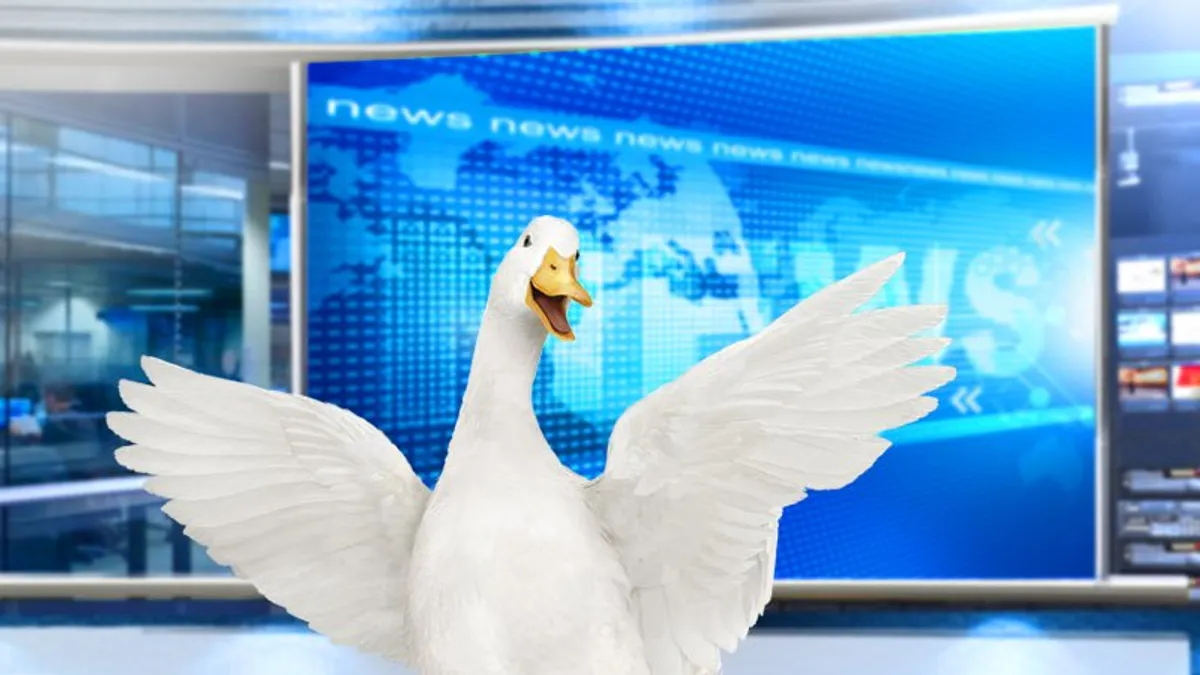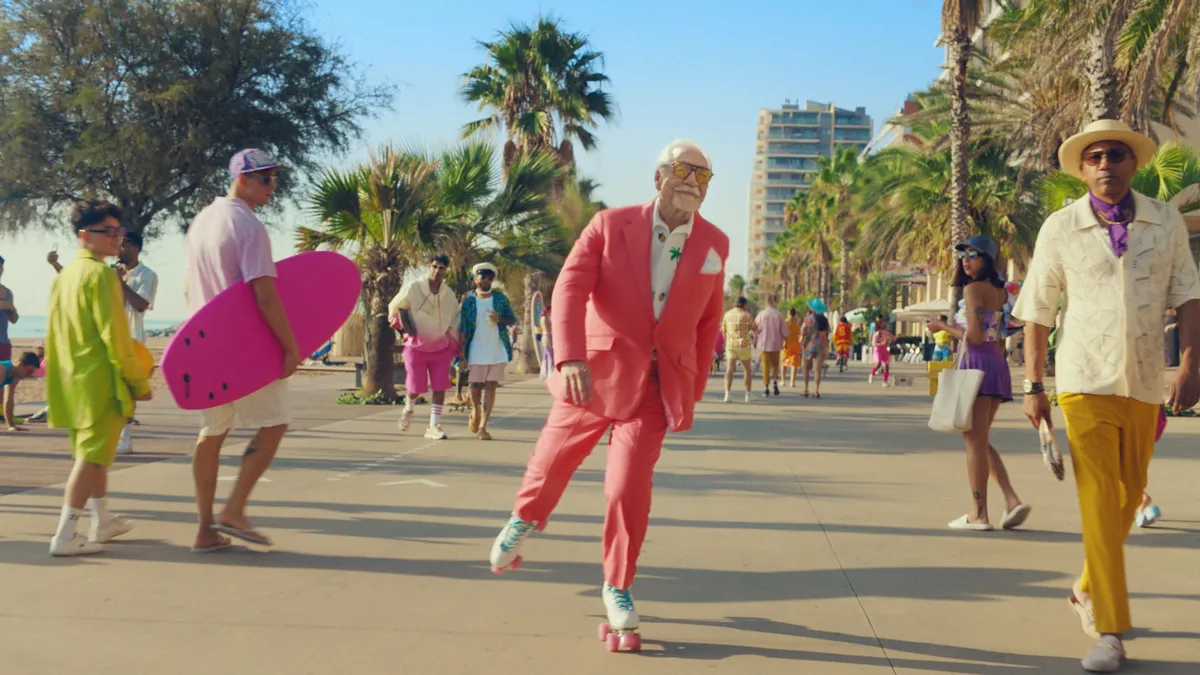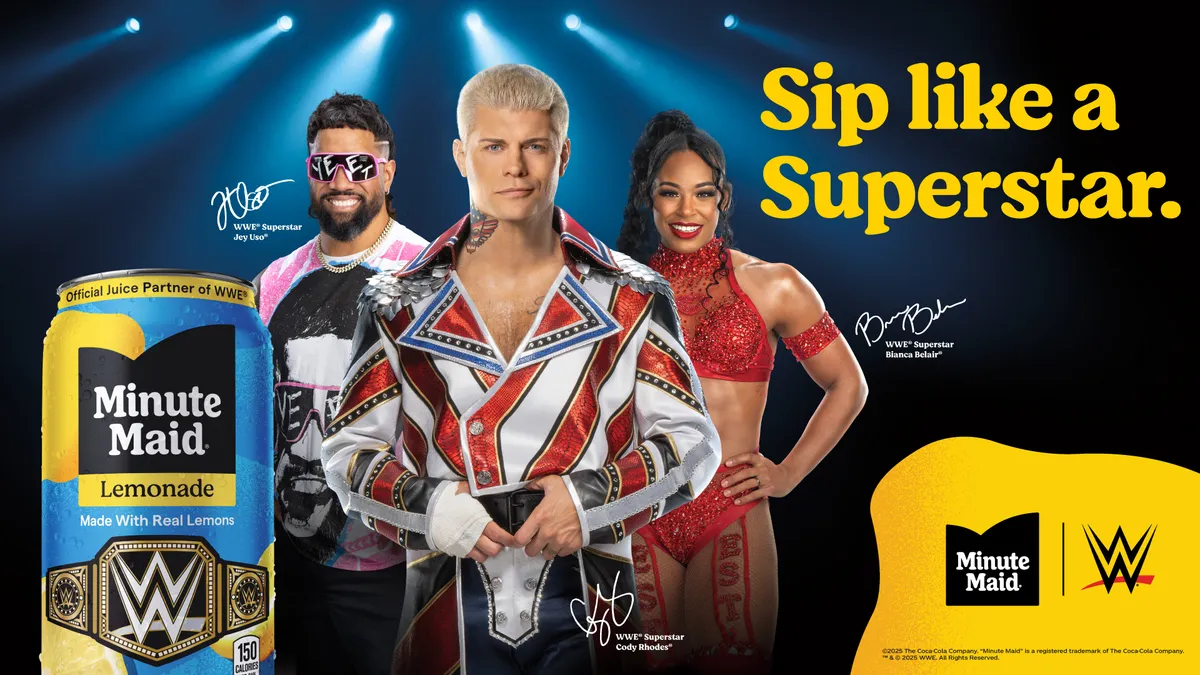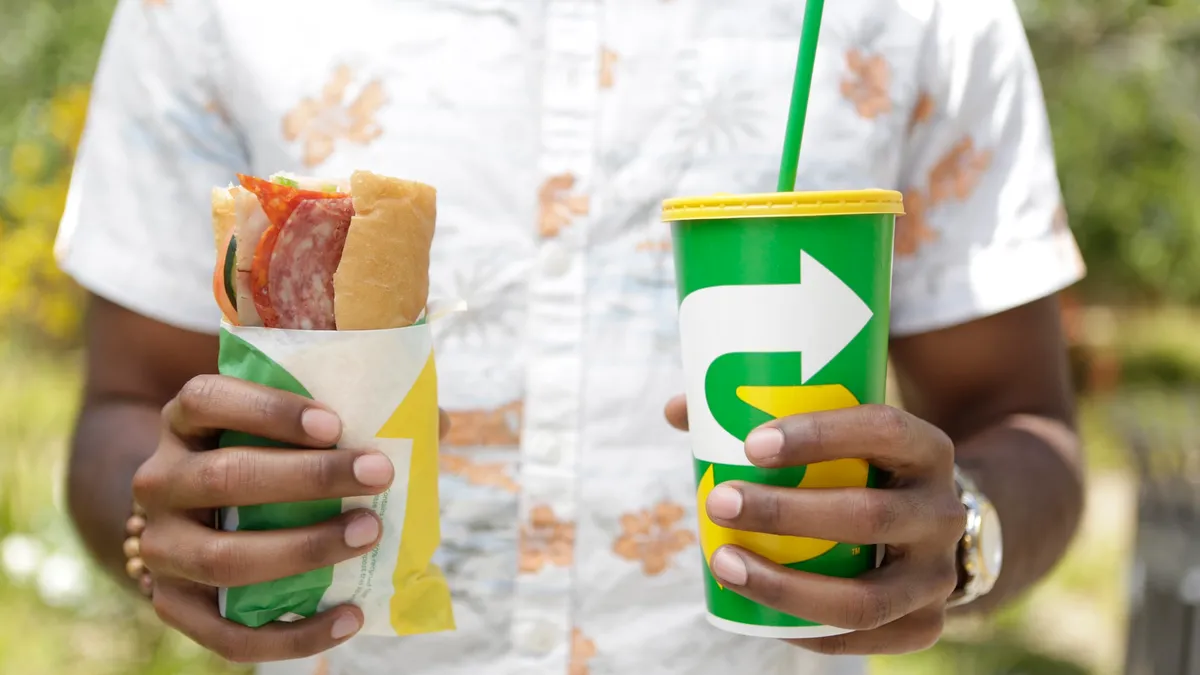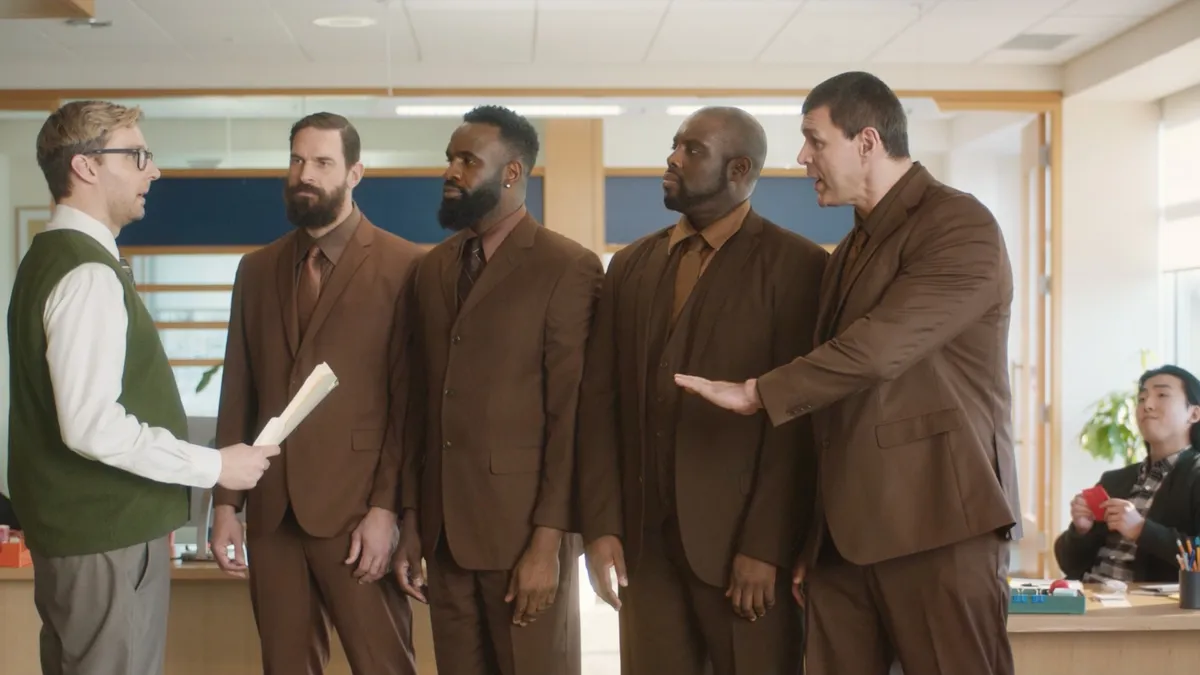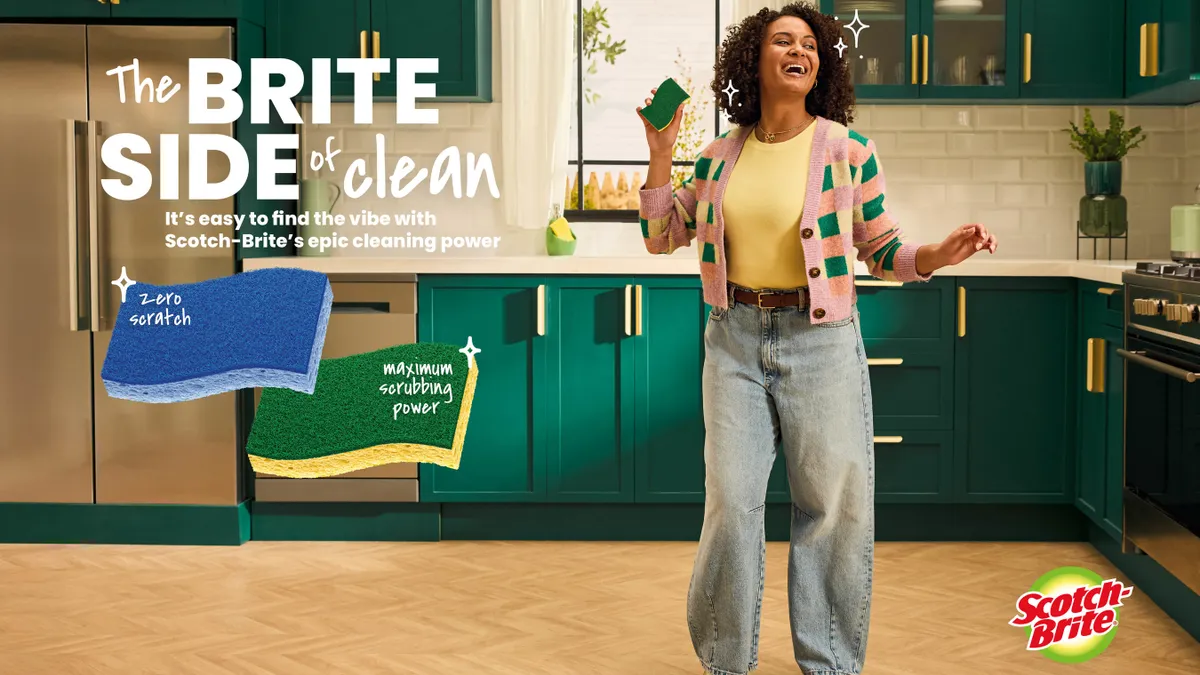These days, nearly everyone knows Aflac — the company says it has over 90% name recognition — but it wasn't always that way. In the 1990s, the American Family Life Assurance Company spent nine years rolling out traditional advertising, and had only managed to lift national brand awareness to about 6% or 7%.
Then came a marketing angle that would change Aflac's fortunes and spur a change throughout the insurance industry: the Aflac Duck. The duck, with its iconic "Aflac!" quack, has been central to the company's brand identity since it debuted 20 years ago. However, the spot that launched the mascot into the zeitgeist was a Hail Mary pass from a company struggling for recognition.
Back in 1999, Aflac Chairman and CEO Dan Amos tasked executive vice president (and his wife) Kathelen Amos to crack the code around how to make Aflac a household name. She hired New York agency Kaplan Thaler Group, which returned with two paths.
The first path used two safe marketing tactics: a celebrity and children. The spot featured Ray Romano, then starring in the hit sitcom "Everybody Loves Raymond," and a handful of kids that spelled out Aflac with blocks. The second path came when Kaplan Thaler creatives were taking a break in a New York park, heard a duck's quack that reminded them of the word "Aflac" and returned to the office to write the spot.
Both ideas were tested, and the park spot scored more than double the spot starring Ray Romano (apparently, not everybody loved Raymond). The CEO made the call to move forward with the duck, deciding to let consumers be the North Star for the company's path ahead.
Three principles for big decisions
According to Shannon Watkins, Aflac's current SVP of brand, Dan Amos made the decision based on three principles used to evaluate major decisions: don't risk more than you can afford to lose, don't risk a lot for a little and consider the odds. The duck passed all three tests.
"To produce the spot, it's a lot of money, but in the grand scheme of things, it was something that they could afford to lose," Watkins told Marketing Dive. "At that time, the company's name recognition was in the single digits, so moving forward with this spot with the duck in it wouldn't have lost that much.
"But 'considering the odds' was the one that pushed him over the edge on this, and it was grounded in the fact that consumer research that came back on the spot said that it was going to be a winner."
That process can be a simple yet effective framework for marketers who must decide whether to take creative risks in 2020. But would the duck be approved today? Watkins believes so for two major reasons.
"I think mascots work really well when they reinforce your brand and your company promise," she said. "When you think about the Aflac Duck, I think it's had staying power because even though it's evolved over time, the role that it's continued to play for our company is to reinforce our brand promise: to be there for consumers when they need us the most.
"Our mascot is helpful, it's friendly, it's kind, but more importantly, it has human characteristics where people can actually see themselves in the duck. I think that has been a winning combination for us."
That combination has since reverberated across the insurance industry. The Aflac Duck predates Geico's Gecko (2005), Progressive's Flo (2008) and Allstate's Mayhem (2010), and it's easy to see its webbed footprints in those other quirky mascots that reinforce their respective brand values. Plus, the duck has helped Aflac to remain culturally relevant.
"When we first launched the Aflac Duck, its role was to deliver comedy, because at that time, our job was to build awareness about the brand and the company name," Watkins said. "Now, 20 years later, we have extremely high brand awareness and our goal is to really try to make sure we build education and knowledge about what our products and services are. So the role of our duck has evolved from not just being the joke, but helping to deliver the message about the company."
Evolution of the duck
Watkins has worked in traditional brand roles for about 20 years, including stops at Procter & Gamble, Kraft and Coca-Cola, and has seen firsthand how consumers' relationship to marketing has shifted.
"What's changed the most is the speed at which consumers are absorbing information, and it's really driven by the fragmentation in the marketplace, technology and social media," she said. That has meant that, instead of waiting for Nielsen results or marketplace metrics, marketers can get real-time consumer feedback that informs and shapes their decisions, she added.
"We have to make sure that we're using every tool possible to really understand strategically the work that we want to deliver, making sure that our strategy and insights are as tight as possible, so that the work that we produce is received in the best way possible and really delivers against the business results we intend it to," she said.
For Aflac, that's meant evolving the duck to meet a changing environment. In January 2019, the company launched the "Aflac Isn't" campaign to clear up misconceptions about the brand's offerings.
"We're in a very cluttered media environment where a lot of insurance players are spending a lot of money, and we found ourselves in a situation where some consumers were confusing us for auto insurance or home insurance, and even pet insurance," Watkins said.
To communicate Aflac's supplemental health insurance brand proposition, the campaign put the duck behind a help desk to clear up those misconceptions. Then, the brand teamed with University of Alabama football coach Nick Saban on a series of ads where Saban and the duck "recruited" new policyholders to the Aflac team.
The insurance company also partnered with Atlanta agency Dagger on a social media strategy, bringing the duck's voice to Facebook, Twitter and Instagram.
"In these channels, the duck's point of view is heard and the voice is the duck, so we're able to be a part of consumers' conversations in real time in a way that Aflac hasn't been before," Watkins said.
The duck's continued evolution has helped keep it relevant for 20 years, and the mascot continues to provide lessons for marketers.
"We believe the duck is here to stay," Watkins said. "We're excited about the next chapters of our company and the stories that the duck will tell."



